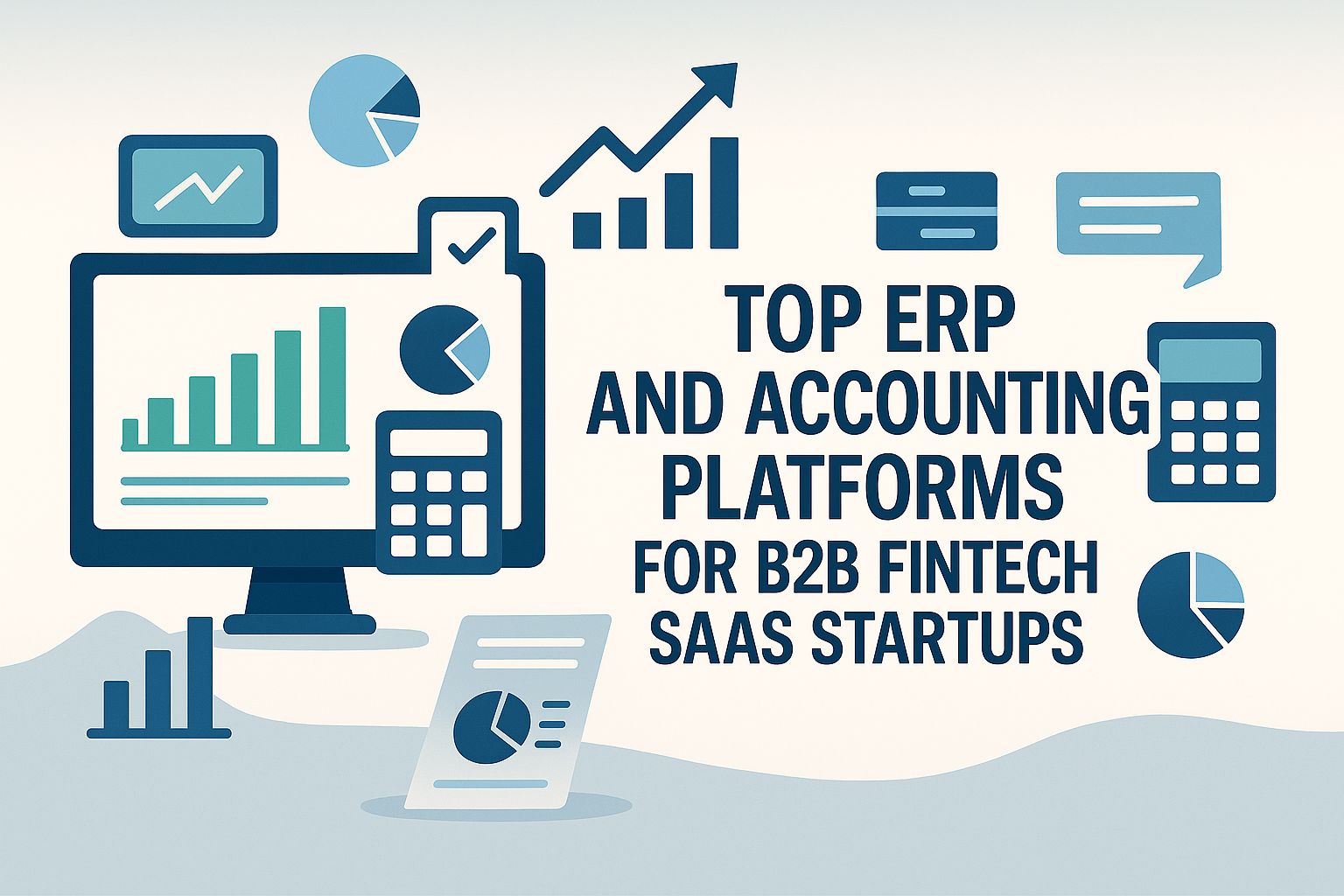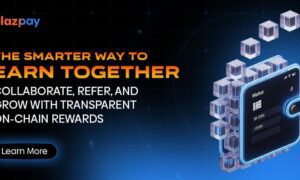Fintech SaaS platforms succeed or fail based on their integration capabilities. Your customers run their businesses on accounting systems, ERPs, payment tools, and CRMs, and they expect your product to work seamlessly with their existing stack.
This guide covers the ERP and accounting systems that matter in 2025: their technical capabilities, real fintech use cases, and where each fits in your product roadmap. This is a clear, technical guidance to help you make the right decisions for your integration strategy.
Why Integration Platforms Matter in Fintech
Building integrations in-house introduces significant technical and operational challenges that compound as you scale.
API Fragmentation: Every accounting system implements different authentication methods, data models, and endpoint structures. QuickBooks uses OAuth 2.0 while NetSuite requires token-based authentication. Xero returns dates in ISO 8601 while others use Unix timestamps.
Financial Logic Complexity: Multi-entity consolidation, foreign exchange calculations, and revenue recognition rules vary across platforms. A simple invoice in one system becomes a complex multi-object transaction in another.
Development Timeline: Each integration takes 2-3 months to build properly, including auth flows, error handling, and data mapping. Supporting five platforms means 10-15 months of engineering time before you have basic market coverage.
Maintenance Overhead: APIs change. Authentication expires. Webhooks fail. Each integration requires ongoing maintenance—typically 20-30% of initial development time annually.
Compliance Requirements: Financial data requires audit trails, proper revenue recognition (ASC 606/IFRS 15), and data residency compliance. Each platform handles these differently.
Integration platforms solve these problems by abstracting platform differences behind consistent interfaces. They reduce integration time from months to weeks, standardize data models across systems, handle authentication and webhook management, and maintain compatibility as APIs evolve.
ERP and Accounting Systems Profiles
Xero
Xero is the cloud-first accounting platform that dominates UK, Australia, and New Zealand markets, built specifically for modern SMBs with strong automation capabilities. The platform works best for products targeting SMBs that value automation and clean workflows, with its API-first design making it ideal for fintech products requiring real-time financial data.
Core Strengths:
- REST API with consistent design patterns
- Comprehensive webhook coverage for real-time updates
- Strong bank feed infrastructure
- Developer-friendly sandbox environment
- Active third-party ecosystem
Typical Use Cases:
- Automated expense categorization using bank feed data
- Real-time cash flow forecasting
- Invoice financing platforms
- Spend management dashboards
Best For: Early-stage SaaS products targeting small businesses, especially in non-US markets. Excellent first integration due to clean API design.
QuickBooks Online / Desktop
QuickBooks maintains its position as the US small business accounting leader with 80% market share, offering deep integration with US tax systems and payroll providers. The platform is essential for any US-focused fintech product, with the desktop version still critical for certain industries despite its complexity.
Core Strengths:
- Comprehensive tax handling for US businesses
- Extensive third-party app marketplace
- Change Data Capture (CDC) for efficient syncing
- Strong reporting APIs
- Integrated payments and payroll
Typical Use Cases:
- Automated sales tax calculation and filing
- Small business lending (cash flow analysis)
- Bill pay automation with ACH integration
- Payroll-linked expense management
Best For: US-centric fintech products needing broad market coverage quickly. Must-have for products targeting traditional SMBs.
Dualentry
Dualentry represents the new wave of AI-native accounting platforms, built from the ground up with machine learning at its core rather than bolted on as an afterthought. The platform fundamentally reimagines how financial data gets processed, categorized, and analyzed through intelligent automation.
Core Strengths:
- GraphQL API for flexible, efficient querying
- AI-powered transaction categorization and anomaly detection
- Real-time subscriptions instead of traditional webhooks
- Automatic data mapping from external sources
- Continuous learning from user corrections
Typical Use Cases:
- Intelligent expense categorization without manual rules
- Automated fraud detection and risk assessment
- Predictive cash flow forecasting
- Smart invoice matching and payment reconciliation
- Dynamic financial reporting with AI insights
Best For: AI-first fintech products, modern startups prioritizing automation, companies seeking 70%+ reduction in manual bookkeeping. Ideal when building products that leverage machine learning for financial insights.
NetSuite
NetSuite serves as Oracle’s cloud ERP platform for mid-market to enterprise companies, handling complex multi-entity and multi-currency operations with extensive customization capabilities. The platform becomes relevant when targeting companies with 100+ employees or complex financial operations, serving as the standard for B2B SaaS companies post-Series B.
Core Strengths:
- Enterprise-grade customization via SuiteScript
- Advanced revenue recognition capabilities
- Multi-subsidiary consolidation
- Robust approval workflows
- Real-time financial reporting
Typical Use Cases:
- Global vendor payment orchestration
- Multi-entity cash management
- Complex approval workflow automation
- Revenue recognition for SaaS metrics
- Inter-company transaction reconciliation
Best For: Growth-stage and enterprise SaaS platforms serving sophisticated finance teams. High implementation complexity but necessary for enterprise deals.
FreshBooks
FreshBooks provides simplified accounting for freelancers and service businesses, focusing on time tracking and project-based billing for the micro-business segment that finds traditional accounting software overwhelming.
Core Strengths:
- Intuitive REST API matching UI concepts
- Built-in time tracking endpoints
- Simple expense management
- Project-based accounting
- Minimal setup requirements
Typical Use Cases:
- Freelancer marketplace payouts
- Time-tracking to invoice automation
- Simple expense reimbursement
- Contractor payment workflows
Best For: Fintechs serving creators, freelancers, or micro-businesses. Limited functionality but extremely low friction.
Microsoft Dynamics 365 Business Central
Business Central operates as Microsoft’s ERP solution for mid-sized businesses, deeply integrated with the Microsoft ecosystem and dominating in Microsoft-heavy environments and specific verticals like manufacturing and professional services.
Core Strengths:
- Native Power Platform integration
- OData v4 standards-based API
- Real-time data access
- Strong manufacturing and distribution features
- Azure AD authentication
Typical Use Cases:
- Procurement automation workflows
- Subscription billing with revenue recognition
- Inventory-linked financial reporting
- Project accounting automation
Best For: Mid-market SaaS products, especially those already integrated with Microsoft tools. Strong choice for vertical SaaS in manufacturing or distribution.
Sage Intacct
Sage Intacct stands as the preferred platform for scaling SaaS companies and sophisticated finance teams, built specifically for automation-first organizations that need true financial intelligence beyond basic bookkeeping. The platform excels when serving mid-market companies ready to graduate from QuickBooks but not yet requiring NetSuite’s enterprise complexity.
Core Strengths:
- Native ASC 606/IFRS 15 revenue recognition
- Dimensional reporting without complex GL structures
- Smart Events for business-logic-driven webhooks
- Multi-entity architecture with unlimited subsidiaries
- Both REST and SOAP APIs with extensive documentation
Typical Use Cases:
- SaaS billing automation with complex revenue recognition
- Multi-entity consolidation with automated eliminations
- Treasury analytics across entities and currencies
- Vendor management with 3-way match automation
- Complex approval workflows based on dimensions
Best For: Scaling B2B SaaS companies (Series A through IPO), sophisticated finance teams needing automation, companies with complex revenue models or multi-entity structures.
Platform Comparison
| Platform | Technical Strengths | Fintech Use Cases | Best For |
| Xero | Clean REST API, comprehensive webhooks, strong ecosystem | Expense management, reconciliation, SMB automation | Early-stage SaaS, non-US markets |
| QuickBooks | US tax depth, integrated payments, CDC for syncing | Billing automation, AP/AR, cash flow analysis | US-centric products, broad SMB coverage |
| NetSuite | Enterprise customization, multi-entity, SuiteScript | Global payouts, consolidation, complex workflows | Enterprise SaaS, post-Series B |
| FreshBooks | Simple API, time tracking, project billing | Marketplace payouts, contractor management | Creator economy, micro-business |
| Dynamics 365 | Microsoft integration, OData standards, real-time | Subscription ops, procurement, project accounting | Mid-market, Microsoft ecosystem |
| Sage Intacct | Revenue automation, dimensions, Smart Events | SaaS metrics, multi-entity ops, compliance | Scaling SaaS, sophisticated finance teams |
| DulaEntry | AI-native architecture, GraphQL API, continuous learning | Intelligent categorization, fraud detection, predictive analytics | AI-first fintech, modern automation |
Key Evaluation Criteria for Fintech SaaS
API Reliability & Documentation: Look for comprehensive documentation with code examples, consistent error handling, and sandbox environments that mirror production. Avoid platforms with sparse documentation or frequent unannounced changes.
Authentication Flows: OAuth 2.0 is standard, but implementation varies. Check token expiration policies, refresh mechanisms, and whether the platform supports service accounts for server-to-server communication.
Webhook Coverage: Real-time updates require comprehensive webhook support. Verify which objects trigger webhooks, retry logic for failed deliveries, and whether webhooks include full object data or just IDs.
Two-Way Sync Capabilities: Assess whether you can both read and write all necessary objects. Some platforms restrict write access to certain fields or require specific permissions.
Financial Logic Support: Evaluate support for multi-currency transactions, tax calculations, revenue recognition rules, and inter-company transactions. Complex financial logic often requires platform-specific implementation.
Multi-Entity & Multi-Currency: For global or enterprise products, verify how the platform handles subsidiary accounting, consolidation, and foreign exchange. Not all platforms support true multi-entity operations.
Compliance Features: Check for audit trail capabilities, role-based access controls, and support for financial regulations (SOC 2, GDPR, ASC 606). Enterprise customers require these features.
Data Model Consistency: Understand how the platform models financial data. Some use traditional double-entry accounting while others abstract it. Consistency affects how easily you can map data between systems.
Ecosystem Integrations: Evaluate pre-built connectors to CRMs, payment processors, and other tools. A strong ecosystem reduces the integration burden on your team.
Fintech Integration Use Cases
Automated Reconciliation: Match bank transactions with accounting records in real-time. Flag discrepancies for review. Support multi-way matching for complex payment flows.
Revenue Recognition Workflows: Transform billing events into journal entries following ASC 606/IFRS 15 rules. Handle contract modifications, refunds, and usage-based billing scenarios.
Vendor Onboarding: Automate vendor creation with tax validation, banking verification, and compliance checks. Route through approval workflows based on risk scores.
Subscription Billing Sync: Mirror subscription lifecycle events (new, upgrade, downgrade, churn) in accounting systems. Calculate and post MRR, ARR, and deferred revenue automatically.
Embedded AP/AR Automation: Scan invoices, extract data via OCR, match to POs, and route for approval. Post payments and update aging reports without manual intervention.
Expense Management Automation: Capture receipts, categorize expenses using ML, enforce policies, and sync approved expenses to accounting systems with proper GL coding.
Cross-Entity Consolidation: Aggregate financial data from multiple subsidiaries, eliminate inter-company transactions, and produce consolidated statements in real-time.
Real-Time Cash Dashboards: Combine bank balances, outstanding invoices, and pending bills to show current and projected cash positions across all accounts and entities.
Where Unified APIs Fit
Building direct integrations to multiple platforms creates exponential complexity. Five platforms mean five authentication methods, five data models, and five webhook implementations. The maintenance burden scales linearly with each platform added.
Unified API platforms provide single integration points that connect to multiple underlying systems. Instead of learning NetSuite’s SOAP API and Xero’s REST API, you work with one consistent interface.
Benefits for fintech teams:
- Ship integrations in weeks instead of months
- One data model across all platforms
- Automatic handling of auth refreshes and webhook delivery
- Built-in error handling and retry logic
- No breaking changes when underlying APIs update
This approach makes sense when you need to support multiple platforms quickly, lack specialized integration expertise, want predictable integration costs, or need to focus engineering on core product features.
Unified APIs work particularly well for horizontal fintech products that serve diverse customer segments. Instead of choosing between Xero for small businesses or NetSuite for enterprises, you support both through the same integration.
For B2B fintech SaaS companies, unifed APIs platforms provide access to all major accounting systems, with normalized data models designed specifically for financial workflows. This eliminates the need to build and maintain individual integrations while ensuring compatibility as your customers grow and switch platforms.



































